
Have you ever wondered what happens when you mix two of America’s most beloved dog breeds? The Golden Retriever Lab Mix, also known as the Goldador, is just that—a delightful blend of the 1st and 3rd most popular breeds in America. From my observations, this fun-loving pet is truly a family favorite. They are incredibly loving and loyal, making them the perfect choice for families who can’t decide between a Golden Retriever and a Labrador.
It’s no surprise that the Labrador Golden Retriever Mix has won over so many hearts. Nevertheless, despite its popularity, there’s still a lot to uncover about its characteristics and care needs.
Therefore, stick around as we dive into everything you need to know about this amazing breed—from health and feeding to exercise and grooming. This is your ultimate guide to the Golden Retriever Lab Mix.
TABLE OF CONTENTS
- Goldador Quick Summary
- Golden Retriever Lab Mix Parent Breeds
- Golden Retriever Lab Mix Physical Characteristics
- Goldador Personality and Temperament
- Golden Retriever Lab Mix Puppies
- Golden Retriever Lab Mix Care Guide
- Golden Retriever Lab Mix Health Issues
- FAQs about the Golden Retriever Lab Mix
- An Affectionate, Intelligent, and Energetic Mix
- Other Labrador Retriever and Golden Retriever Mixes
Goldador Quick Summary
Golden Retriever Lab Mix Parent Breeds
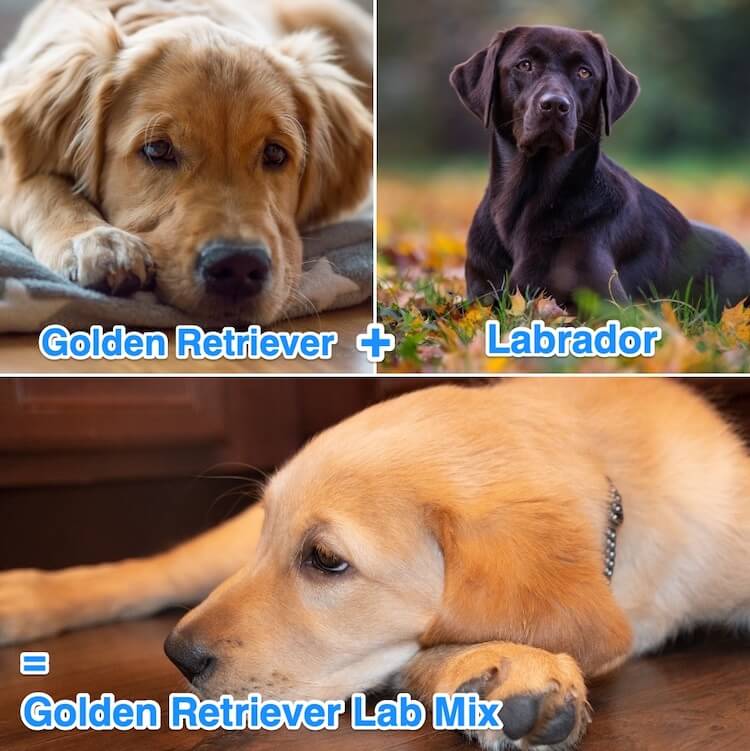
I’ve always been fascinated by how designer crossbreeds come into existence. First seen in the 1990s, this delightful mix was initially bred to be a guide dog. It’s incredible to see how they’ve also taken on roles in search and rescue, as well as drug detection over the years.
From what I’ve noticed, the popularity of the Golden Retriever Lab Mix as a family pet has really taken off. However, despite their growing fame, they aren’t recognized by major kennel clubs like the American Kennel Club (AKC) or Fédération Cynologique Internationale (FCI). Interestingly, both parent breeds do hold recognition individually by these clubs.
Let’s explore what makes the Golden Retriever and Labrador Retriever such beloved breeds and how their characteristics blend into the lovable Goldador.
Golden Retriever
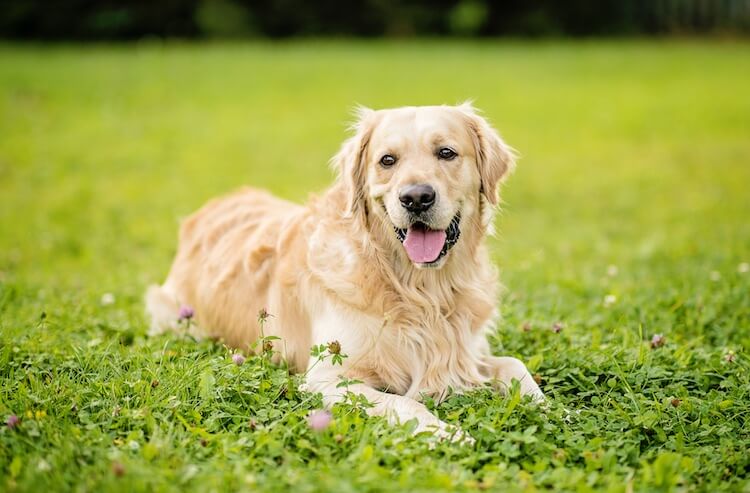
Origin
This breed has been a loyal companion ever since its first breeding in the early 19th Century in Scotland. Originally, Golden Retrievers were bred to be gun dogs, assisting hunters by retrieving game from both water and land. Over time, their roles have evolved, and now they’re more commonly seen as beloved family pets and service animals.
Physical Characteristics
Golden Retrievers are instantly recognizable with their beautiful golden coats and friendly expressions. They typically have a dense, water-repellant outer coat with a thick undercoat, which I’ve noticed helps them adapt to various weather conditions. Their sturdy build and strong, athletic bodies make them perfect for a range of activities, from playing fetch in the backyard to more demanding tasks like search and rescue.
Temperament and Behavior
From what I’ve observed, Golden Retrievers have an incredibly friendly and tolerant nature. They are known for being reliable, friendly, and trustworthy. These traits make them fantastic companions, especially for families with children. Their eagerness to please and high intelligence also make them highly trainable, which is why you often see them as service dogs. Whether they’re working or playing, Golden Retrievers bring joy and companionship to those around them.
Labrador
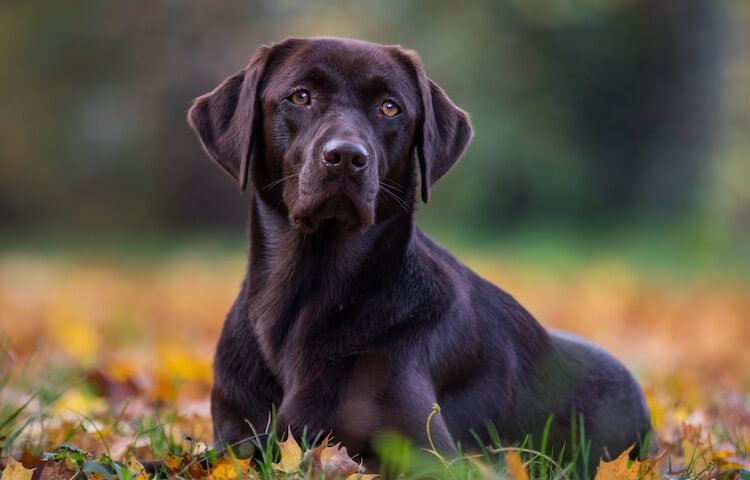
Origin
Labrador Retrievers have a rich history that I’ve always found fascinating. Originating from Newfoundland, Canada, in the early 19th Century, these dogs were initially known as St. John’s dogs or Lesser Newfoundland dogs. They were bred to assist fishermen, retrieving fishing nets and catching fish that escaped from fishing lines. By the mid-19th Century, they were brought to England, where they were further developed into the Labradors we know today.
Physical Characteristics
Labradors are well-known for their strong, athletic build and their distinctive, dense coat that comes in black, yellow, and chocolate. From what I’ve noticed, their short, water-resistant fur and otter-like tail make them excellent swimmers. Their muscular bodies and sturdy legs allow them to excel in various physical activities, from retrieving game to performing agility tasks.
Temperament and Behavior
I’ve always admired Labradors for their friendly and outgoing nature. They are incredibly sociable and tend to get along well with both humans and other animals. Labs are also known for their intelligence and eagerness to please, which makes them highly trainable. This is why you often see them working as guide dogs, search and rescue dogs, and therapy animals. Their playful and energetic behavior makes them a joy to be around, whether they’re working or playing with their families.
Golden Retriever Lab Mix Physical Characteristics
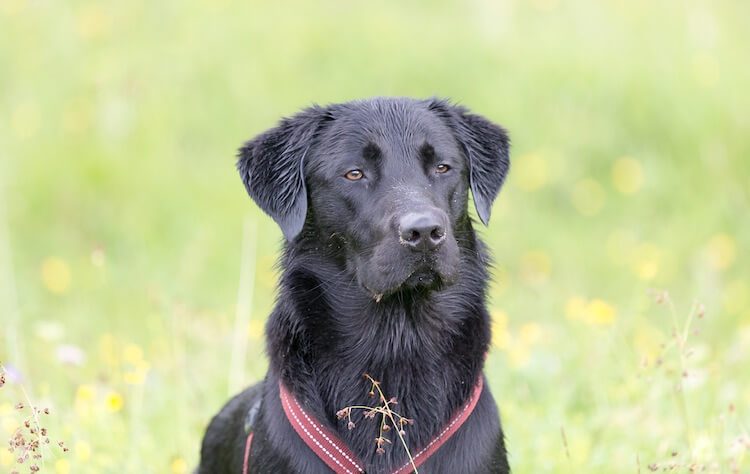
No matter their specific physical traits, all Golden Retriever Lab Mixes share those adorable faces and sunny dispositions that make them so beloved by their families.
Size
From what I’ve observed, the Golden Retriever Lab Mix is classified as a medium to large-sized dog. They typically stand between 20 and 24 inches tall, with females being slightly smaller than males. Their weight ranges from 60 to 80 pounds, with females again being on the lighter side. It’s fascinating to see how this mix combines the robust build of both parent breeds into a versatile and athletic dog.
Color
When it comes to color, these dogs are most often yellow, but you can also find them in gold, black, red, or even brown. Each dog’s coloring can be unique, reflecting the genetic lottery that comes with mixed breeds. This variety adds to their charm, making each Goldador truly one-of-a-kind. I’ve noticed that they often have large, loving brown eyes that just melt your heart, although, on rare occasions, you might spot one with blue eyes.
Coat
The coat of a Golden Retriever Lab Mix can vary widely, and it’s always exciting to see the differences even within the same litter. Generally, they have a short, dense coat that is often straight but can sometimes be wavy. Unlike some other Golden Retriever mixes, most of these dogs have a single coat rather than a double one. I’ve noticed that this makes them a bit easier to groom, though regular brushing is still important to keep their coat healthy and shiny.
Another characteristic I’ve seen in some Golden Retriever Lab Mixes is the “racing stripe” along their backs. This is a darker stripe running from the base of their neck to the tip of their tail, adding to their unique appearance.
Goldador Personality and Temperament
Have you ever met a dog that could brighten up your worst day with just a wag of its tail? That’s the Golden Retriever Lab Mix for you. From what I’ve observed, this breed is as loyal as they come, but don’t expect them to be guard dogs. They’re more likely to smother you with kisses than show any kind of aggression. It’s one of the reasons they’re such beloved family pets.
One thing I’ve noticed about these dogs is that they can be quite vocal when they’re bored. They’ll howl and bark to pass the time, and sometimes they get noisy when they’re excited too. It’s something to consider if you have close neighbors. Their need for attention is almost comical—they’re happiest when they’re being fussed over, and if they feel neglected, you might see a bit of a temper tantrum.
Compatibility with Families
The Golden Retriever Lab Mix is the perfect family dog. They have the patience of an angel and love the company of children. Who else could they convince to throw a ball or play games for hours on end? They’re incredibly good-natured around young kids and can tolerate a good deal of rough play without ever losing their patience.
This patience extends to other household pets too. Golden Labradors are affectionate with other animals, especially when socialized from puppyhood. Cats, guinea pigs, rabbits, other dogs—you name it, they’ll likely get along just fine.
Personality
These friendly and playful dogs are often noted for their endless enthusiasm and energy. They’re always up for a game or two and don’t do well with long periods of inactivity. If left alone for too long, they might become destructive out of boredom. I’ve heard stories of them making quick work of slippers or carpets, which is something to keep in mind if you’re considering one of these lively pups.
Their fun, bubbly nature is infectious. Everything is an adventure to the Golden Retriever Lab Mix, from a trip to the store to a walk to the mailbox. They’re friendly to a fault—there’s no such thing as a stranger to this dog, only potential new friends.
Golden Retriever Lab Mix Puppies
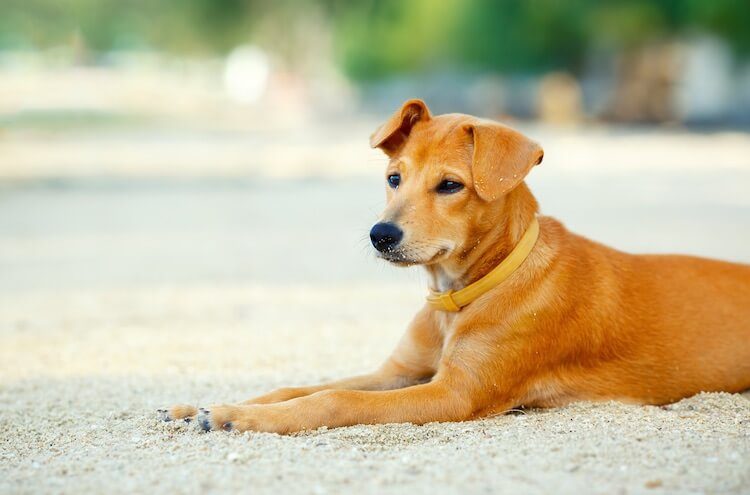
When it comes to Golden Retriever Lab Mix puppies, one word comes to mind: clumsy! I’ve often seen these adorable little furballs tripping over their big paws and long legs, getting into all sorts of mischief. It’s all part of their charm. This clumsiness usually fades as they grow older, typically around 18 months when they reach maturity. However, some of them retain that playful, puppy-like nature well into adulthood.
In terms of litter size, it can vary quite a bit. Depending on the parents, there can be anywhere from four to twelve puppies in a litter. It’s always exciting to see the variety and uniqueness each litter brings.
These puppies are often considered premium, which is reflected in their price. They typically cost between $1,200 and $3,000 USD. For puppies with pedigree or show ring parents, the price can soar up to $5,000 USD. It’s a significant investment, but many believe it’s worth it for such a delightful and loyal companion.
Here’s an approximate growth chart for a Golden Retriever Lab Mix puppy to give you an idea of what to expect as they grow:
- Birth to 2 Weeks: These tiny pups are dependent on their mother, eyes and ears closed, and spend most of their time sleeping and nursing.
- 2 to 4 Weeks: Their eyes and ears open, and they start to become more aware of their surroundings.
- 4 to 8 Weeks: The puppies become more active and playful, starting to interact with their littermates and humans.
- 8 to 16 Weeks: This is a crucial socialization period where they begin to learn about the world around them.
- 4 to 6 Months: They enter their teething phase, which can be a bit of a challenge as they’ll want to chew on everything.
- 6 to 12 Months: The clumsiness starts to diminish as they grow into their bodies, though they still retain their playful nature.
- 12 to 18 Months: They reach their full size and begin to mature, though they might still act like a puppy for a bit longer.
Watching a Goldador puppy grow and develop is truly a joy, filled with memorable moments and lots of laughter.
Golden Retriever Lab Mix Care Guide
One thing I’ve noticed about the Golden Retriever Lab Mix is that their friendly and affectionate nature makes them suitable for people from all walks of life. However, it’s not advisable to keep this dog in a small space like an apartment, especially if you’re going to be away from home a lot. They really thrive in environments where they have room to move and people around to give them attention. Beyond that, they’re very adaptable to their owners, as long as they get the right amount of exercise and cuddles.
With that in mind, let’s dive into the specifics of how to care for a Golden Retriever Lab Mix.
Feeding
I’ve noticed that they are incredibly food-oriented, much like their Labrador parents. They’ll often try to charm you out of a few scraps or sneak food off the table if given the chance. It’s important to keep an eye on their diet to ensure they stay healthy and happy.
Daily Feeding Amount
From what I’ve observed, your Golden Retriever Lab Mix needs about three cups of kibble or the equivalent each day. This should be split into two meals to help prevent gastric torsion, a condition that’s quite common in Labradors. Feeding them twice a day not only reduces the risk but also helps in maintaining their energy levels throughout the day.
Type of Food
Whether it’s dry, wet, or raw food, Golden Retriever Lab Mixes generally aren’t fussy eaters. They find all types just as tasty. However, due to their Labrador lineage, they can have sensitive stomachs. It’s best to stick to one type of food consistently to avoid any digestive issues. Switching foods frequently can upset their stomachs, so finding a high-quality diet they enjoy and sticking with it is key.
Feeding Routine
I’ve noticed that establishing a consistent feeding routine is crucial for Goldadors. Feeding them at the same times each day helps regulate their digestion and keeps them on a predictable schedule. Plus, it can help curb their constant food begging, as they’ll learn when to expect their meals.
Grooming
Grooming a Golden Retriever Lab Mix can be a delightful experience, especially since they are affectionate dogs that generally enjoy attention. Keeping up with their grooming needs is essential to ensure they stay healthy and comfortable.
Brushing
From what I’ve observed, these dogs are mild to moderate shedders all year round, which means weekly brushing is a must. Their coat can shed moderately, so a consistent grooming schedule helps manage the shedding and keeps their coat looking great. Most Golden Retriever Lab Mixes love the attention, so convincing them it’s time for grooming is usually pretty easy.
Ear Cleaning
During grooming sessions, it’s important to check their ears. Keeping their ears clean helps prevent infections and promotes good hygiene. I’ve noticed that regular ear checks and cleanings are crucial, especially for breeds like this that can be prone to ear issues.
Dental Care
When it comes to dental care, brushing their teeth as frequently as possible is ideal. Daily brushing is best if your dog will tolerate it. Maintaining their dental health helps prevent bad breath and other dental issues.
Nail Clipping
Nail clipping is another essential part of grooming. It’s best to have their nails clipped every six to eight weeks by a professional groomer or veterinarian. This keeps their nails at a healthy length and prevents any discomfort.
Bathing
Golden Retriever Lab Mixes love water, so bath time can be a fun activity for both you and your dog. They don’t have particularly sensitive skin, so you can bathe them as often as needed using dog shampoo. Regular baths help keep their coat clean and fresh.
Clipping
Due to their short coat, clipping is unlikely to be necessary for this breed. Their natural coat length is usually manageable with regular brushing and bathing.
Training and Exercise
Training a Golden Retriever Lab Mix can be a rewarding experience, especially given their eagerness to learn and please. Here are some puppy training tips to guide you through the process.
Training
From what I’ve observed, both Golden Retrievers and Labradors are very obedient and people-pleasing dogs. This mix tends to inherit those traits, making them highly intelligent and eager to learn. When it comes to training, you might find that food-based rewards work exceptionally well, especially since Labradors are known to be very food-oriented. However, Golden Retrievers also thrive on physical contact like pats or cuddles. It’s a good idea to experiment with different rewards to see what best motivates your dog.
Exercise
The Golden Retriever Lab Mix is generally easy to exercise. They’re happy to lollop along by your side and aren’t picky about where you go, as long as you’re together. These active dogs can be a bit lazy, particularly as they get older, so keeping them motivated is key. I’ve noticed that getting them excited can really help in getting them up and moving. Both parent breeds enjoy swimming, so taking your dog to a local lake could be a great way to get some exercise. Ensuring they get enough physical and mental exercise is crucial, as a lack of activity can lead to destructive behaviors like barking, digging, and chewing.
Socialization
Socialization is another critical aspect of training. Introducing your Golden Retriever Lab Mix to various people, animals, and environments from a young age can help them become well-adjusted adults. From what I’ve seen, they’re generally friendly and sociable, but early socialization helps reinforce these traits and reduces the likelihood of developing any fear or aggression issues.
Mental Needs
Meeting their mental needs is just as important as physical exercise. These dogs are intelligent and require mental stimulation to stay happy. Puzzle toys, interactive games, and training sessions can help keep their minds engaged. I’ve found that mixing up activities and introducing new challenges regularly can prevent boredom and keep your dog mentally sharp.
Golden Retriever Lab Mix Health Issues
These dogs tend to be relatively healthy compared to many other designer crossbreeds. However, like all breeds, they can be prone to certain health issues inherited from their parent breeds. Here are some common health problems to watch out for.
Hip and Elbow Arthritis
One of the most common issues I’ve seen in Golden Retrievers and Labradors is hip and elbow arthritis, particularly osteoarthritis. This condition causes the degradation of cartilage in the joints, leading to pain and stiffness. You might notice your dog becoming less active or having difficulty moving, especially after exercise. Regular vet check-ups and maintaining a healthy weight can help manage this condition and improve your dog’s quality of life.
Eye Conditions
Eye conditions are another concern, especially in Labradors. Conditions like cataracts and Progressive Retinal Atrophy (PRA) are fairly common. Cataracts can cause cloudiness in the eye, leading to impaired vision, while PRA gradually leads to blindness. These conditions can vary in severity from dog to dog. Regular eye exams can help catch these issues early, and while they might not be completely preventable, they are often manageable with proper veterinary care.
Canine Obesity
Canine obesity is a growing issue, and it’s estimated that 56% of American dogs are obese. This is a significant concern for Golden Retriever Lab Mixes, given their love for food. Obesity can lead to a host of other health problems, including joint issues, diabetes, and heart disease. The good news is that obesity is preventable with the right diet and exercise regimen. Monitoring their food intake and ensuring they get plenty of physical activity can help keep them at a healthy weight.
FAQs about the Golden Retriever Lab Mix
How big does a Golden Retriever Lab Mix get?
A Golden Retriever Lab Mix typically stands between 20 and 24 inches tall and weighs between 60 and 80 pounds. Females are generally slightly smaller than males.
What is the temperament of a Goldador?
Goldadors are known for their friendly, affectionate, and playful temperament. They are great with children and other pets, making them excellent family dogs.
How much exercise does a Lab and Golden Retriever Mix need?
A Lab and Golden Retriever Mix requires at least an hour of exercise each day. They enjoy activities like walking, running, playing fetch, and swimming.
Are Golden Retriever and Lab Mix dogs good with children?
Yes, Golden Retriever and Lab Mix dogs are very good with children. They are patient, gentle, and enjoy playing, making them ideal companions for kids.
What is the lifespan of a Labrador Retriever Golden Mix?
The lifespan of a Labrador Retriever Golden Mix is typically between 10 and 15 years, depending on their overall health, diet, and exercise regimen.
Do Golden Labs shed a lot?
Yes, Golden Labs are moderate shedders. Regular brushing is necessary to manage their shedding and keep their coat healthy.
How trainable is a Golden Labrador Retriever?
A Golden Labrador Retriever is highly trainable. They are intelligent, eager to please, and respond well to positive reinforcement training methods.
What kind of coat does a Lab Golden Retriever Mix have?
A Lab Golden Retriever Mix usually has a short, dense coat that can be straight or slightly wavy. They often have a single coat rather than a double one.
Are there any common health issues in Golden Retriever Lab Mixes?
Common health issues in Golden Retriever Lab Mixes include hip and elbow arthritis, eye conditions like cataracts and Progressive Retinal Atrophy, and obesity.
What should I feed my Labrador Retriever Golden Mix?
Your Labrador Retriever Golden Mix should be fed a high-quality diet suitable for their age, size, and activity level. They typically do well on dry kibble, but wet or raw food can also be appropriate. Feeding them twice a day helps prevent gastric torsion.
An Affectionate, Intelligent, and Energetic Mix
These dogs are renowned for their patience with young children, making them ideal for families of all ages. Their friendly and playful nature means they’re always up for an adventure, a ball game, or both!
What I’ve noticed is that they are at their happiest when they’re around their family members or receiving any kind of physical affection. Belly rubs and ear scratches are particular favorites. However, this strong desire for attention and love of the outdoors can lead to barking and destructive behavior if their needs aren’t met.
The key to having a happy Golden Retriever Lab Mix is dedicating as much time to them as they dedicate to you. They thrive on interaction and activity, so they’re best suited for people who can spend ample time with them and enjoy an active lifestyle. If you’re looking for a loyal, affectionate, and energetic companion, this breed could be a wonderful addition to your family.
Do you have this glorious dog at home? Leave us a comment about them in the comments below.
Other Labrador Retriever and Golden Retriever Mixes
If you’re interested in learning about other Lab mixes or Golden Retriever mixes, check out the hybrid dog breeds below.
Lab Mixes
- German Shepherd Lab Mix
- Pitbull Lab Mix
- Blue Heeler Lab Mix
- Rottweiler Lab Mix
- Beagle Lab Mix
- Border Collie Lab Mix
- Husky Lab Mix
- Australian Shepherd Lab Mix
- Labrabull
- Labradoodle Dog
- Boxador
- Mini Labradoodle
- Australian Labradoodle

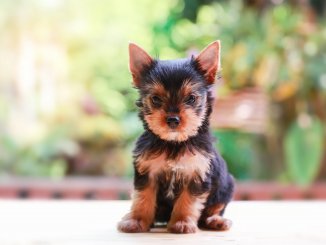
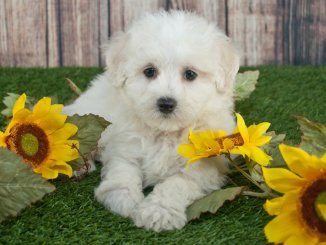
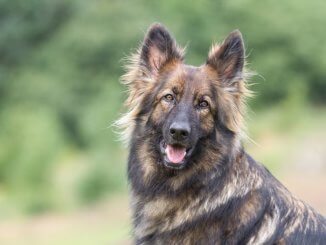
I am interested in the golden retriever/lab mix, Female. I had one for years and she was the best dog.
We adopted a “Golden Labrador” rescue three months ago at age 8 months. He is turning out to be just what you describe, however, he was never socialized around people. He’s getting much better at not barking at strangers, but he’s still very excitable around children. Hope it will pass! He’s in his third week of beginner obedience.
I have a golden retriever/lab mix. She has been brilliant with our, now adult, children and their other pets. She virtually trained herself, with the aid of cooked chicken. As a youngster she would walk three hours plus in a morning; now eleven it is half that split into two sessions. She sheds freely, loves water, tennis balls, sticks, her family and anyone with food in their pocket. couldn’t think of a better choice for families with children.